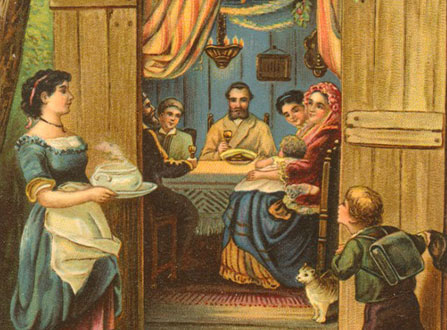Sukkot
Sukkot is a Jewish festival originating in the Torah, which lasts for seven days, from the 15th of Tishrei until the 21st. As its name implies, sitting in the sukkah (a ritual hut or booth, built specially for the occasion) is the holiday’s salient feature. Sukkot is also called the Feast of Ingathering, or the Harvest Festival, to mark the end of the grain and summer fruit harvest, before the beginning of the rains.
This is the third of the four Tishrei festivals, preceded by Rosh Hashanah and Yom Kippur, and immediately followed by Simcḥat Torah (Shemini Atzeret). Sukkot is also the third of the three pilgrimages to Jerusalem that were observed during the days of the Temple. Sukkot begins with a Yom Tov ("good day"), meaning a festival day on which, according to the Torah, all work is prohibited, and is followed by six days of Hol Hamoed (the intermediate days of the festival), the last of which is called Hoshana Rabba. Simcḥat Torah falls the day after Hoshana Rabba.
Sitting in the Sukkah
The festival’s main commandment is to sit in the sukkah, which is a kind of temporary dwelling for the seven days of the festival. Sitting in the sukkah is intended to serve as a reminder to future generations, as is written in the Bible, “You shall dwell in booths for seven days. All who are native Israelites shall dwell in booths that your generations may know that I made the children of Israel dwell in booths when I brought them out of the land of Egypt, I am the Lord your God.” (Lev 23, 42–43). The festival is commonly believed to commemorate the booths in which the children of Israel sat when they left Egypt. However, according to another interpretation, the sukkot symbolize the “clouds of glory” that protected the Israelites during their sojourn in the desert.
The sukkah is built outdoors according to detailed laws, and must include at least three sides and a thatched roof. It is customary to eat in the sukkah and some even sleep in it. Apart from the halakhic aspect, over the years the sukkah has also acquired social and communal significance. Many invest in their decoration, and over the centuries they have become a focus point for hospitality and joy, especially loved by children.
The Four Species and Additional Commandments
Other commandments practiced on the holiday are - to be joyful (ribbui simcha), and Netilat Lulav (waving the lulav, the closed frond of a date palm). Like sitting in the sukkah, the lulav ritual is a commandment unique to Sukkot. The “Four Species”—lulav, etrog (citron), hadas (myrtle) and arava (willow)—are bound together, and then waved and shaken as blessings are recited. According to the Torah, the commandment to shake the lulav applies only to the first day, but since the destruction of the Temple, it is customary to observe it on all days of the festival, except the Sabbath.
Simchat Beit HaShoeva (lit. "the rejoicing of the water-drawing house"), is a special celebration held during the intermediate days of the festival, and includes music and dancing to commemorate the water libation ceremony in the days of the Temple in Jerusalem. During the seven days of Sukkot, water was pumped from the Shiloah spring for this purpose. Ushpezin is another holiday custom with ancient roots. Symbolic guests, ushpezin in Aramaic, among them the patriarchs Abraham, Isaac and Jacob, are invited to the sukkah. The practice of hosting guests in the sukkah derives from this custom.


